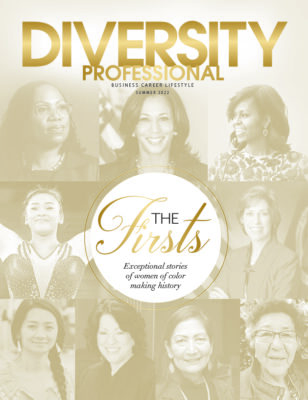THE NEW RULES OF PROFESSIONAL SPEAKING
Live and virtual events bring opportunities for enhanced offerings.
Professional speaking has grown substantially over the years into a global industry and, in doing so, has opened doors to career opportunities for those who are experts and influencers in their respective fields. While opportunities have increased, so too has competition for professional speakers. The world of professional public speaking has also changed over the past 18 months, much in the same ways the world did as businesses evolved during the pandemic. Professional speaking no longer exists in a vacuum where experts take the stage, present, and are compensated for their time and expertise.
Professionals today must continually work on their skills, examine industry trends, and manage speaking engagements with care to rise above the competition. Events are often live, though some excellent opportunities exist in the virtual realm, with more to come. With these changes in the industry, come new rules of professional speaking.
The More Things Change…
Nearly everyone is familiar with the saying, “The more things change, the more they stay the same.” While featuring its own unique measure of sarcasm, the adage is accurate. Although changes happen frequently, much remains constant amid that ebb and flow—certainly in the professional speaking industry. There are ‘rules of public speaking’ that will stand the test of time.
Professional speakers still need to hone their style to establish authority and guide the audience to focus and relate as they glean the benefits of listening to an expert. Setting the tone requires the professional speaker to first know the audience and incorporate their own personality into the speech or presentation. In addition, clothing, sense of humor and movements also help to establish tone and style.
As a professional speaker, eye contact remains key. This establishes a connection with audience members and demonstrates investment in them. The goal remains to make the audience a part of the speech or presentation, drawing them in and encouraging them to engage and participate. Pacing presentation and pausing to punctuate important points endures as a significant tenet, both in live venues, as well as virtual ones.
One final reminder in this world of change: Venue arrival time is critical and it should be done before the appointed time, whether appearing before a live audience or virtually from the living room. Take the time to familiarize with the setup, ensure the technology being utilized is functioning properly and check audio and visual equipment. Also take the extra time to get in a minute or two of practice before the presentation begins.
The New Rules
While it may seem as though virtual professional speaking came on the scene quickly after the pandemic, it has been around for quite some time. What has changed is clients are now actively seeking virtual speakers to motivate and encourage employees and customers with nearly the same frequency as they seek live speakers for conferences, seminars, conventions and more.
Professional speakers are no longer the purveyors of ritualistic prepared remarks. Instead, today’s most influential presenters are those who provide effective, honest, and communicative dialogue. As presentations become more interactive, audiences expect conversations, not lectures, which means professional speakers can stay ahead of the competition with dynamic, interactive speeches designed to draw your audience in and deliver your message in an accessible and engaging manner. Formal presentations are out, approachability and authenticity are in. Be yourself and continue to hone your speaking skills.
Refining a skillset doesn’t necessarily mean more practice. Instead, it means better practice. Repeating what has been done in the past won’t lead to improvement but taking feedback and making positive changes can. The latest technology can also help. Simply record rehearsals, watch them, and take notes, while factoring in any feedback. The changes needed will become clear, allowing practice for a newer, better presentation technique with those adaptations.
Visuals can also enhance a message or detract from it. Rid presentations of ineffective visuals and add those that truly express the main message or idea. Always choose high-quality images, even when using stock. Rather than matching the presentation to the visual aids, develop a narrative and then enrich it with assets that help focus the audience on the intended message.
A Conversation with Friends
While some of the tried-and-true rules of effective professional speaking remain steadfast, much has changed in this realm, whether live or virtual. Today’s most powerful speakers are authentic and approachable. Their presentations are less like formal lectures and more like a conversation with friends. The best professional speakers find that success lies in their ability to make a connection with their audience, while sharing valuable information from a position of both knowledge and confidence.









